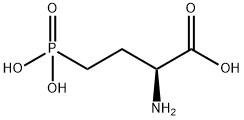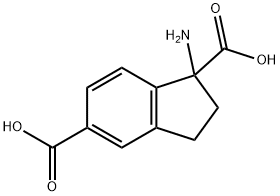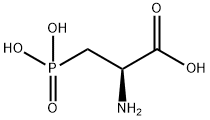amino(3-oxo-2,3-dihydro-1,2-oxazol-5-yl)aceticacid , ≥95% , 2552-55-8
Synonym(s):
α-Amino-3-hydroxy-5-isoxazoleacetic acid;2-amino-2-(3-hydroxyisoxazol-5-yl) acetic acid, α-Amino-(3-hydroxy-5-isoxazolyl)acetic acid, Glutamate Receptor Agonist, Ibotenic acid;Ibotenic Acid - CAS 2552-55-8 - Calbiochem
| Pack Size | Price | Stock | Quantity |
| 1MG | RMB255.20 | In Stock |
|
| 5MG | RMB839.20 | In Stock |
|
| 10mg | RMB1423.20 | In Stock |
|
| 25MG | RMB3359.20 | In Stock |
|
| 50mg | RMB6079.20 | In Stock |
|
| others | Enquire |
PRODUCT Properties
| Melting point: | 141-147 °C |
| Density | 1.621±0.06 g/cm3 (20 ºC 760 Torr) |
| storage temp. | Keep in dark place,Inert atmosphere,Room temperature |
| solubility | H2O: soluble1mg/mL, clear, colorless (with sonication) |
| form | White solid |
| pka | 2.16±0.10(Predicted) |
| color | white |
| Odor | Practically odorless. Faint, meat-like, mild and sweet taste in aqueous dilutions. |
| Water Solubility | Soluble to 10 mM in water and to 100 mM in 1.1eq. NaOH |
| Stability: | Stable for 1 year from date of purchase as supplied. Solutions in distilled water may be stored at -20°C for up to 1 month. |
| InChIKey | IRJCBFDCFXCWGO-UHFFFAOYSA-N |
| LogP | -1.070 (est) |
| CAS DataBase Reference | 2552-55-8(CAS DataBase Reference) |
Description and Uses
Ibotenic acid (60573-88-8) is a conformationally restricted analog of glutamate which occurs naturally in Amanita mascaria and related mushrooms.? It is a non-specific glutamate receptor (both NMDA and mGluR) agonist.1 May be used to induce hippocampal lesioning in rat neurodegeneration models.2,3 Induces lesions in the subiculum in a mouse model of Alzheimer’s disease.4
Ibotenic acid is a neuroexcitatory amino acid originally isolated from Amanita species that functions as a NMDA and metabotropic glutamate receptor agonist. As a neurotoxin, ibotenic acid is often used to induce brain lesions in animals that model cognitive dysfunctions resulting from neurodegenerative diseases, traumatic brain injury, and stroke.
Safety
| Symbol(GHS) |  GHS06 |
| Signal word | Danger |
| Hazard statements | H301 |
| Precautionary statements | P264-P270-P301+P310-P405-P501 |
| Hazard Codes | T,Xn |
| Risk Statements | 23/24/25-25-40 |
| Safety Statements | 45-38-36/37/39-28A-22-36 |
| RIDADR | 1544 |
| WGK Germany | 3 |
| RTECS | NY2100000 |
| HazardClass | 6.1(b) |
| PackingGroup | III |
| Toxicity | LD50 in mice, rats (mg/kg): 15, 42 i.v.; 38, 129 orally (Theobald) |






